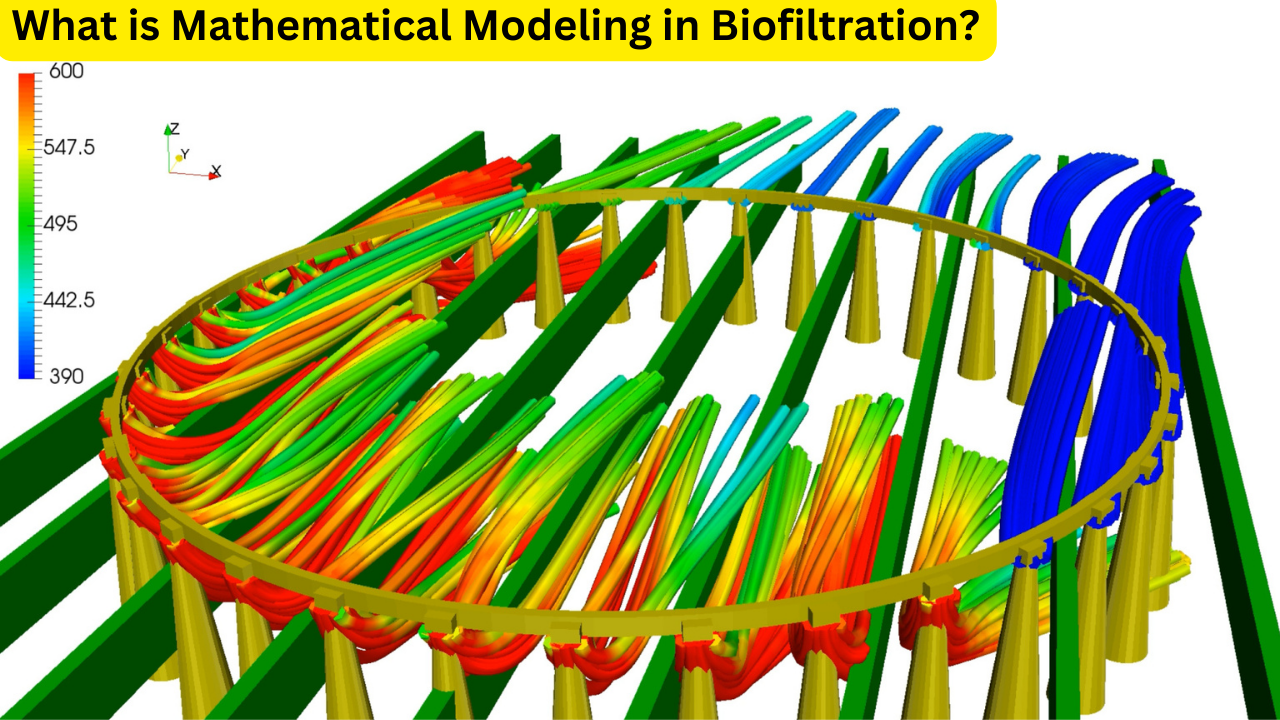What is Mathematical Modeling in Biofiltration?

Mathematical modeling is a powerful tool used to represent real-world systems through mathematical concepts and language. It helps in understanding, analyzing, and predicting the behavior of these systems under various conditions. One fascinating application of mathematical modeling is in the field of biofiltration, a method of pollution management that uses biological materials to absorb and break down pollutants.
Introduction to Biofiltration
Biofiltration is a process that employs a bioreactor containing live materials, such as microorganisms, to biologically remove pollutants from the air or water. This technique is highly effective in treating volatile organic compounds (VOCs) like hydrophilic methanol and hydrophobic α-pinene. The success of biofiltration largely depends on the intricate interplay between biological and chemical processes, which can be described using mathematical models.
The Role of Mathematical Modeling in Biofiltration
Mathematical models in biofiltration help to describe and predict the behavior of pollutants as they interact with biological materials. These models often involve complex systems of nonlinear diffusion equations, which take into account the Michaelis-Menten kinetics of enzymatic reactions. By modeling these processes, we can optimize the design and operation of biofilters to enhance their efficiency and effectiveness.
Understanding the Michaelis-Menten Kinetics
The Michaelis-Menten kinetics model describes the rate of enzymatic reactions by relating reaction rates to the concentration of substrates. This model is crucial in biofiltration as it helps to predict how quickly pollutants will be broken down by the microorganisms in the biofilter. The nonlinear diffusion equations derived from this model provide a mathematical framework to simulate the chemical oxidation in the gas phase and the mass transfer at the air-biofilm interface.
Nonlinear Diffusion Equations in Biofiltration
The nonlinear diffusion equations are used to represent the movement and reaction of pollutants within the biofilter. These equations account for various factors such as the concentration of pollutants, the reaction rates, and the diffusion coefficients. By solving these equations, we can gain insights into the spatial and temporal distribution of pollutants within the biofilter.
Mathematical Models for VOCs in Biofiltration
Volatile organic compounds (VOCs) like methanol and α-pinene are common pollutants treated by biofiltration. Mathematical models for these compounds help to understand their behavior and optimize the biofiltration process.
Modeling Methanol in Biofiltration
Methanol is a hydrophilic compound, meaning it readily dissolves in water. In a biofilter, methanol is absorbed by the biofilm and broken down by microorganisms. The mathematical model for methanol in biofiltration includes equations that describe its absorption, diffusion, and reaction within the biofilm.
Modeling α-Pinene in Biofiltration
α-Pinene, on the other hand, is a hydrophobic compound that does not dissolve easily in water. This poses a unique challenge in biofiltration. The mathematical model for α-pinene involves equations that describe its transfer from the gas phase to the biofilm and its subsequent breakdown by microorganisms.
Numerical Study of Saturation in Biofiltration
To accurately predict the performance of biofilters, it is essential to study the saturation of pollutants like methanol and α-pinene in both the biofilm and the gas phase. Numerical techniques, such as those based on supervised machine learning algorithms, can be employed for this purpose.
Supervised Machine Learning for Biofiltration
Supervised machine learning algorithms, particularly those based on the architecture of Elman neural networks (ENN), can be used to model the saturation of pollutants in biofiltration. These algorithms are trained on experimental data to predict the concentration of pollutants under various conditions. The Levenberg-Marquardt (LM) optimization paradigm is often used to fine-tune the parameters of the neural networks, ensuring accurate predictions.
Elman Neural Networks in Biofiltration
Elman neural networks are a type of recurrent neural network that can capture the dynamic behavior of pollutants in biofiltration. These networks consist of interconnected neurons that process information through weighted connections. By training an ENN on experimental data, we can develop a predictive model for the saturation of methanol and α-pinene in the biofilter.
Optimization and Validation of Biofiltration Models
To ensure the accuracy and reliability of biofiltration models, it is essential to validate them against experimental data and optimize their parameters.
Levenberg-Marquardt Optimization
The Levenberg-Marquardt (LM) optimization algorithm is widely used to find the optimal parameters for neural network models. This algorithm combines the advantages of gradient descent and the Gauss-Newton method, making it highly effective for training complex models. By using the LM algorithm, we can ensure that our biofiltration models accurately represent the real-life behavior of pollutants.
Validation of Biofiltration Models
The validation of biofiltration models involves comparing the predicted results with experimental data. This step is crucial to ensure that the models accurately describe the behavior of pollutants under various conditions. The performance of the models is often evaluated using metrics such as absolute errors, mean absolute deviations, computational complexity, and mean square error.
Applications of Biofiltration Models
Mathematical models of biofiltration have numerous applications in chemical engineering and environmental management. These models can be used to design and optimize biofilters, predict their performance under different conditions, and develop new biofiltration techniques.
Design and Optimization of Biofilters
By using mathematical models, we can design biofilters that maximize the removal of pollutants while minimizing operational costs. These models help to identify the optimal conditions for biofiltration, such as the concentration of pollutants, the size of the biofilter, and the type of biological material used.
Performance Prediction of Biofilters
Mathematical models can be used to predict the performance of biofilters under different conditions. This is particularly useful for planning and decision-making in pollution management. By simulating various scenarios, we can identify potential issues and develop strategies to address them.
Development of New Biofiltration Techniques
Mathematical modeling can also be used to develop new biofiltration techniques. By understanding the underlying mechanisms of biofiltration, researchers can innovate and improve existing methods. This can lead to more efficient and effective solutions for pollution management.
Conclusion
In conclusion, mathematical modeling plays a crucial role in the field of biofiltration. By providing a detailed and accurate representation of the processes involved, these models help to optimize the design and operation of biofilters, predict their performance, and develop new techniques. The integration of machine learning algorithms, such as Elman neural networks and the Levenberg-Marquardt optimization paradigm, further enhances the accuracy and reliability of these models. As we continue to advance our understanding of biofiltration through mathematical modeling, we can develop more effective solutions for managing pollution and protecting the environment.




